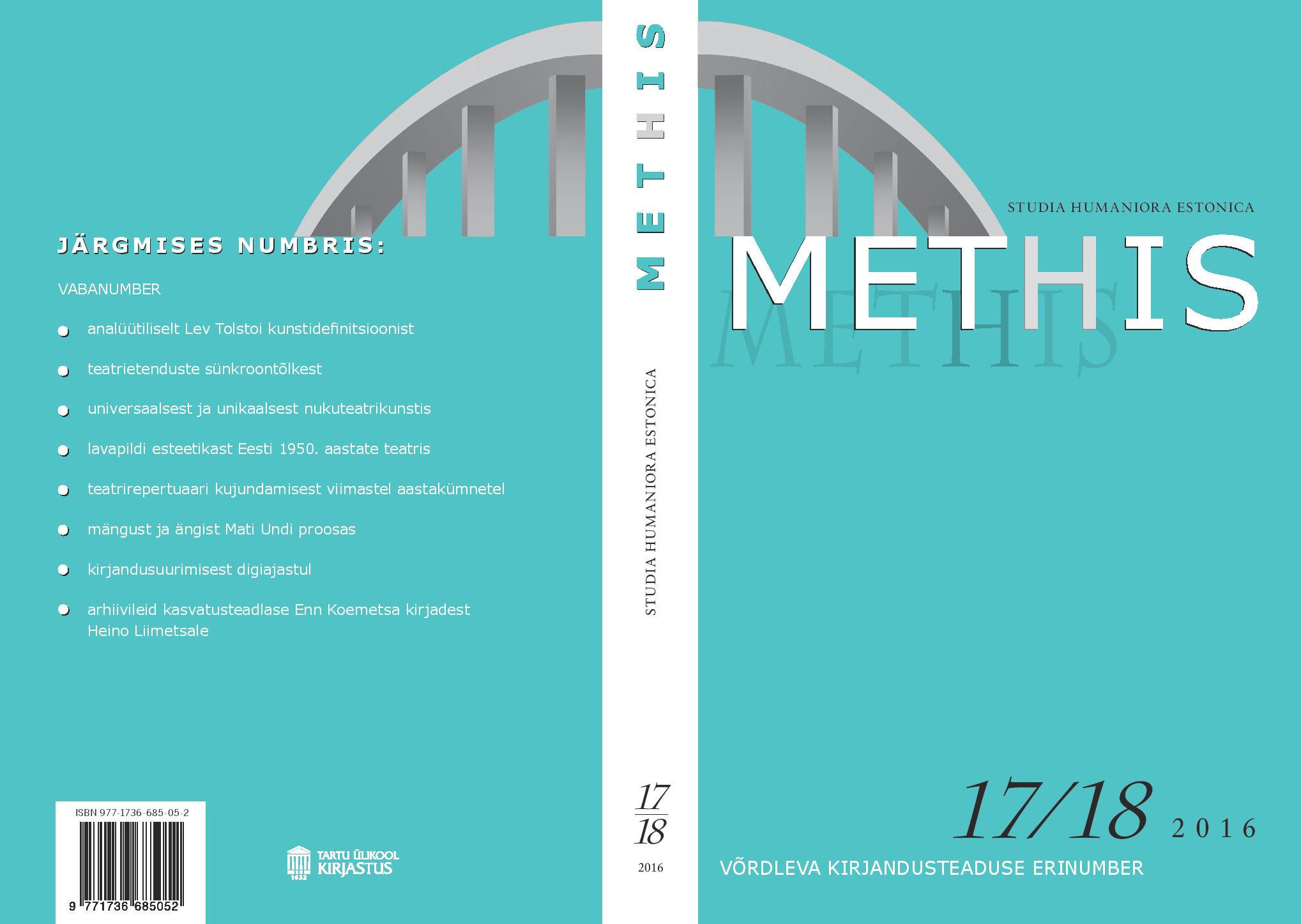Inimkonna hämarus: Marie Under ja saksa ekspressionism / The Twilight of Humanity: Marie Under's Translations of German Expressionist Poetry
DOI:
https://doi.org/10.7592/methis.v14i17/18.13215Keywords:
ekspressionism, Marie Under, tõlkekirjandus, kultuuriülekanne, expressionism, literature in translation, cultural translationAbstract
Teesid: 1920. aastal avaldas Marie Under eestikeelse tõlkevalimiku saksa uuemast lüürikast, milles suurim osakaal on ekspressionistlikel luuletajatel. Koos selle vaatlusega käsitleb artikkel Underi hinnangut ekspressionismile kui kultuurinähtusele ning ekspressionistlikke siirdeid kahes Underi luulekogus, „Verivalla“ ja „Pärisosa“. Luule tõlkimine võib toita luuletaja loomingulisi allikaid, kuid huvitavad on ka need juhtumid, kui luuletaja neist läbitöötatud vormidest lõpuks loobub.
In 1920 Estonian poet Marie Under published an anthology of translations from recent German poetry, the largest number of which were expressionists. Most of the poems were chosen from Kurt Pinthus’ anthology Menschheitsdämmerung: Symphonie jüngster Dichtung, published in 1920, a carefully composed summa of German expressionist poetry. Under’s first examples of expressionist translations, published in the album of the Siuru group of poets in 1919 met with arch and scathing criticism, particularly on the level of style: ostensibly she had “beautified” expressionist rhetoric. She was not deterred, but persisted, and alongside the volume of translations published a short critical article on expressionism and its ethical dimension in the newspaper Tallinna Teataja, where she outlined Kurt Pinthus’ justifications for the composition and structuring of his edited anthology. This paper explores Under’s part in the cultural transfer of German expressionist lyric poetry into Estonian: her selections of authors and individual poems, the periodization of the movement through the table of contents, the emphases and omissions of the resultant whole. Secondly, and more importantly the paper investigates the impact of expressionist topics and rhetoric on Under’s two next volumes of poetry, Verivalla (Land of Blood, 1919–1920) and Pärisosa (Portion, 1920–1922). The main focus of this analysis is on Under’s lexical experiments and stylistic registers, and the lyric strategies she adopted based on three poets: Ernst Stadler, Georg Heym, and Else Lasker-Schüler


